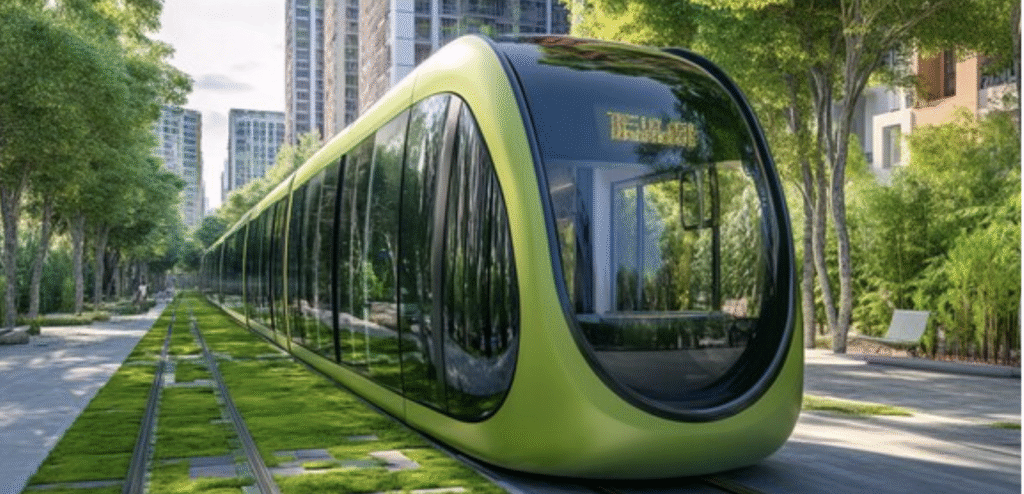Ultra-Light Rail Transit: The Value Engineered LRT

MTS combines Lightweight Electric Trams, and Fast Construction Techniques, creating a total transit solution that meets the social environmental and fiscal needs of 21st Century communities.
On/Off Rail capability streamlines routes with one vehicle across multiple modes, reducing transfer and transit times while attracting ridership with a total system solution for about 1/3 the cost of a typical LRT.

Fiscally Sustainable
Ultra Light Rail Transit is the only low capital, high ridership model. The result is operation with a positive ROI. MTS will arrange private or 3P financing and remove budgetary limitations, so you can expand transit on your schedule.
What makes the system low cost when others are so expensive?
ULRT benefits from three features that combine to shatter the capital barrier.
- We use vehicles that are light enough to operate on existing road-beds, and the cost of laying a massive concrete foundation is removed.
- ULRV’s use flash charging to eliminate the overhead pantographs and catenary wires that are an enormous cost to engineer, fit into the built environment, and construct.
- Our on/off rail technology eliminates the need for switches. The on-road capability means the vehicles can pass each other, other traffic, go door to door, climb hills and deal with snow.
The first and last mile problem, solved
The ULRT system uses different vehicle sizes. A stop to stop vehicle which is 40 to 65 feet long and a door to door vehicle which is 24′ long. They share the same rails but the door to door goes onto side streets for most pick ups and drop offs.
On Off Rail Technology = Fast Construction
Our on/off rail technology eliminates the need for switches, and allows the vehicles to use most existing infrastructure. The lightweight tram vehicles operate on rails set with helical piles. This avoids moving underground utilities and pouring massive concrete foundations.
How can a tracked system not interfere with other vehicles?
- The on/off rail technology has the ULRV riding on steel wheels on a steel track while the ‘traction wheel’ rotates with the steel wheel but not touching the ground. It hovers over a ‘trough’ that is about 2″ below the tire.
When the track comes to a major intersection, the trough gets shallower and the traction wheel takes over.
What about the road where the track is in use on the steel wheels?
- The track is a 2″ depression in the road that is about 12″ wide. It is less problematic than streetcar tracks because bicycle and motorcycle tires will not get ‘caught’ in them. Cars and trucks can traverse them with no impact other than the sensation of running over a ridge in the pavement. Snowploughs run parallel to them and even if impacted perpendicularly, the edges are at an angle that would not catch the leading edge of a snowplough.
How can a ULRV on rails operate door to door?
- The ability to get off the rails and back on again is how ULRV’s go on side streets and pick up and drop off passengers door to door. Because they share the rails with the larger stop to stop vehicles, they benefit from the flash charges and the smooth fast ‘express’ ride the rails offer when the door to door vehicle is full and mainlining into the city core.
How can ULRV’s climb hills and go around tight corners like a bus, when they’re on rails like any LRT?
- To climb hills or go around tight corners the ULRV rail trough disappears and transitions to drive on the tires until it’s performed its turn or hill climb. Then the track reappears and the ULRV transitions back to the rails.
It’s About Time
The long time to operation for LRT’s is due to the need to plan for and construct massive rail foundations, pantograph poles and wires, dedicated signage and signals, crossings at intersections, and overpasses and underpasses all while dealing with underground utilities. ULRT systems fit the existing infrastructure and can be planned, budgeted, financed, engineered, constructed, and operated within a few years.
